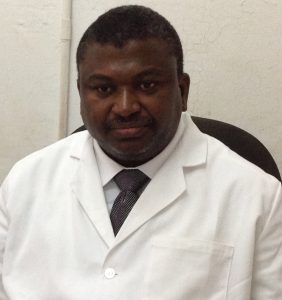Top Health Experts
By: Nyima Sillah
Top health experts have revealed that 70-80% of amputation cases at Edward Francis Small Teaching Hospital (EFSTH) are the ramifications of traditional treatment for bone fractures, advising fracture patients to seek immediate hospital care to avoid amputation.
The Chief Medical Director of EFSTH Dr. Ammar Al Jafari and his deputy Dr. Abubacarr Jagne made an impassioned appeal to fracture patients to resort to modern treatment to avoid loss of limbs.
“70% to 80% of our amputated cases are because of traditional fracture treatment. Anytime you have a fracture, come to the hospital first and if we cannot treat you after two weeks or three weeks, then you can go for traditional treatment but don’t start with traditional treatment,” the Edward Francis Small Teaching Hospital’s chief medical director said in an exclusive interview with The Voice. He gave the assurance that the main referral hospital is well-equipped to do X-rays and operations for fracture patients and discharge them in a week.
CMD Jafari explained that some fracture patients come to EFSTH when their injuries are already festering as they only check in at the hospital three months after sustaining an injury. This, he went on, renders operations impossible as the injury is no longer fresh.
“If the patient falls today or has an accident today andhas a fracture in the bone, if they come on that very day, in one week we can do the operation but after three months, we cannot do the operation and they will blame the hospital,” CMD explained.
The Deputy Chief Medical Director of EFSTH, Dr. Abubacarr Jagne, stated that the nightmare with Gambians is that EFSTH is not their first choice for fracture treatment, saying fracture patients only visit the hospital when the fracture is being neglected.
“If you leave a fracture, the bones will unite. Sometimes, we receive many cases of fractures and their family members request discharge because they prefer traditional treatment. It is minimized now but before, it was a problem,” Dr. Jagne stated.
According to him, the natural course of things is that if you put two bones together, they will unite without any intervention but whether they will unite properly is where the problem lies.
He explained that if the bones unite abnormally, the leg or hand will be deformed and they cannot be used as preferred, adding that this is the moment patients visit the hospital.
“Sometimes, the way they tie it makes the blood flow to compromise on the hand. Sometimes, you see that the hands will become infected or the leg becomes infected and, in that case, you have to amputate thehand or the leg,” Dr. Jagne asserted.




